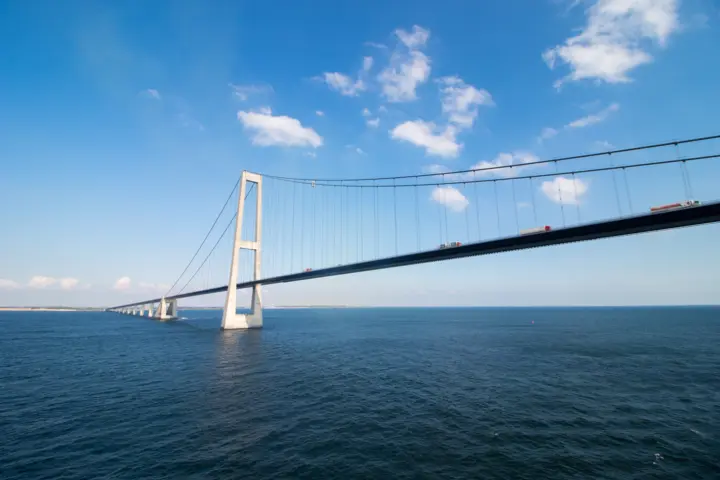Structural Health Monitoring with Kistler: the Great Belt Bridge in Denmark is monitored continuously for structural changes with the aid of K-Beam accelerometers.
Bridges connect people. They promote mobility and enable a rapid exchange of goods and services. As part of vibrant arterial routes crossing rivers, valleys, buildings or estuaries, they stimulate enterprise and prosperity. Since it became possible to calculate bridges with increasing accuracy in the 19th century and new materials also became available – beginning with cast iron and steel, then reinforced and prestressed concretes – the number of bridges constructed increased all over the world. It is evident today that many of these have aged considerably. This is partially due to their abundance, with five-digit numbers existing in many industrialized countries. It is also due to the fact that, during the construction boom following the Second World War, it was impossible to anticipate the enormity of traffic volumes in the 21st century, volumes that continue to grow in many places.
These conditions often lead to the collapse of bridges, despite regular inspections and repairs. The Fern Hollow Bridge in Pittsburgh (USA), an approximately 135-meter-long three-span steel bridge over a forest ravine, collapsed on 28 January 2022. Fortunately, no fatalities occurred, although several vehicles, including a bus, were involved in the collapse. How can accidents of this nature be avoided, and which technologies are available to protect bridges more effectively?







![Why bridges need our attention [object Object]](https://kistler.cdn.celum.cloud/SAPCommerce_Document_Preview/999-248e.webp)